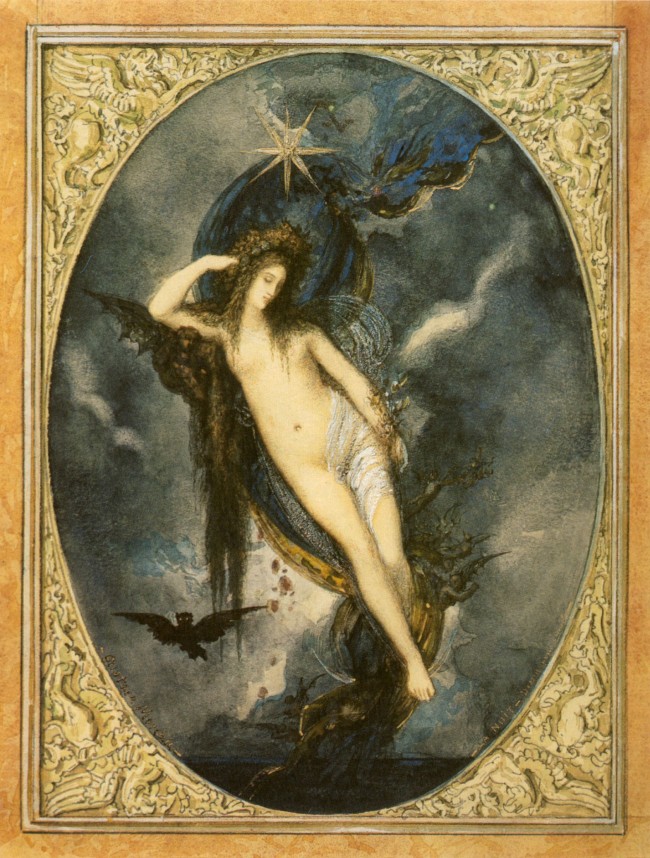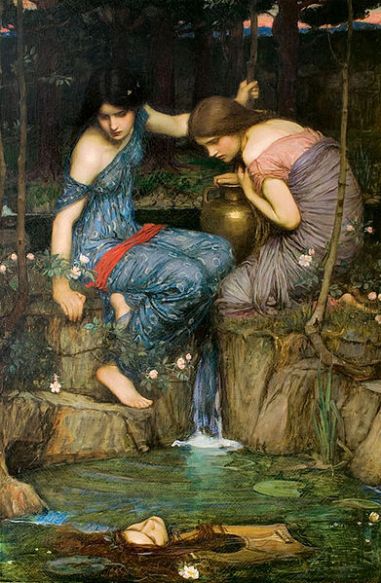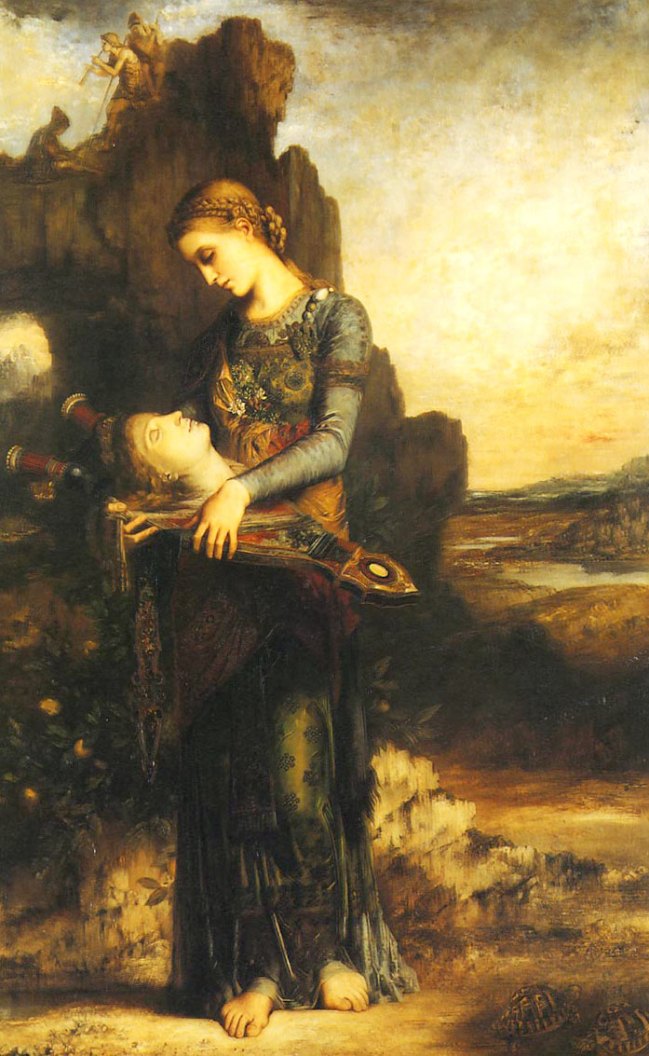Orpheus, a Roman mosaic
I have recently read a fascinating article by Liz Locke, under the title “Orpheus and Orphism: Cosmology and Sacrifice at the Boundary” (Folklore Forum 28:2, 1997). Orpheus is a figure that hides many mysteries. He was a master lyre player and singer whose music “would calm wild beasts and move trees, rocks, and rivers to gather about him to listen.” In the most famous myth, his newly wedded wife, Eurydice, dies of a snake bite. He begs Persephone, the Queen of the Underworld, to bring his wife back. The goddess is so moved by his music that she allows him to descend to the underworld and bring back Eurydice under the condition that he cannot look at her until they are both safely back. Unfortunately, he cannot resist the urge to look at her prematurely and he loses her forever. In another myth, his sad, mournful singing after losing his wife for the second time, drives the Maenads to such a frenzy that they tear his body to pieces. He was also said to have saved the crew of Jason’s Argo from the deadly song of the Sirens. Finally, he is said to have been the founding father of Orphism, an exclusively male religious sect. Asceticism and disavowing of the body was at the core of their beliefs and practices. They strongly believed in reincarnation and a separation of the mortal body and the immortal soul.
They also professed their own version of a creation myth, different from that of Homer and Hesiod. Liz Locke summarizes it in this way:
“First there was Chronos (Time). Out of Time came Aither (Ether), Chaos (Unorder), and Erebos (Darkness). Time fashioned an Egg inside Aither. The Egg split into two parts and from it emerged Phanes, marvelously beautiful, of both sexes, a figure of shining light with four eyes in a lion’s head, and golden wings, who is also called Protogonos, Eriepaios, Metis, Ge, Eros, Kore, and Dionysos … Phanes bore a daughter, Nyx (Night), with whom s/he mated and to whom s/he gave the gift of prophecy. Nyx gave her oracles in a cave guarded by a goddess called Ananke (Necessity), the first law-giver for the gods. Phanes then gave her/his scepter to Nyx, making her the second ruler of the universe.
Nyx bore Gaia (Earth) and Ouranos (Sky), who together produced the Titans – Kronos, Rhea, Okeanos (Ocean), Mnemosyne (Memory), Themis (Sovereignty), and the rest. Gaia bore the Moirai (Fates), the Hechatoncheires (Hundred-Handers), and the Cyclops, who fashioned and bestowed the thunderbolts. Nyx passed Phanes’ scepter to Ouranos, who was castrated by Kronos (Nyx’s favorite grandchild), and from whose semen arose Aphrodite, the essence of sex. The matings of Kronos and Rhea produced the generation of gods known as the Olympians, among whom was Zeus, whose early protection was undertaken by the Kuretes, male nurturers of Mt. Ida on Crete, at the behest of Nyx.
Having been spared by Rhea from Kronos’ child-killing spree, and castrating him in the traditional way, Zeus swallowed Phanes-Eros-Metis-Dionysos, the originator, thereby becoming ‘the beginning, middle, and end of all.’ Together with Phanes, all things within Zeus were created again: Aither, Chaos, Erebos, Sky, Ocean, Earth, Tartaros and all the gods and goddesses. The commentator of the ‘Derveni Papyrus’ tells us that the animating principle behind all of this work is Moira (a singular female incarnation of Fate), who, having been swallowed as breath (reason), gives Zeus mastery over Time (Being-in-Time) itself . ‘All that was then in being and all that was to come to pass, all was there, mingled like streams in the belly of Zeus.’
Zeus asked his great-grandmother Nyx how he might separate out the Many from himself, the One, and establish his rule. Nyx taught him how to arrange the universe. Athena sprang from Zeus’ head to become ‘the accomplisher of his will.’ Zeus with Rhea (now identified as Demeter) mated in the bodies of snakes to produce Kore-Persephone. Raped by Hades, she bore the Furies; raped by Zeus, she bore the infant Dionysos, to whom Zeus gave Phanes’ throne and scepter, saying to all the generations, ‘This one have I made your king.’
The Titans, renewed with the rest, got past the Kuretes, stationed again as guards, and attacked the child Dionysos (now called Zagreus), while he played with a mirror and other toys. In attempting to escape them, he became ‘a youthful Zeus, an aged Kronos, a babe, a youth, a lion, a horse, a horned snake, a tiger, and a bull’ The Titans killed Zagreus, tore his body into pieces, boiled, roasted, and ate his flesh. Zeus sent Apollo to collect, arrange, and bury his limbs on Mt. Parnassos at Delphi. Athena rescued his heart, which Zeus pounded into a potion and gave to a mortal woman, his lover Semele, to drink. Semele’s body, annihilated at Zeus’ parousia, was no longer suitable for birthing the god, so he snatched the sacred embryo from her womb and replanted it in his thigh. Dionysos was reborn from Zeus. But because some of the Titans had killed and cannibalized the god, Zeus hurled his thunderbolt at them (Atlas and Prometheus, at least, were spared); from their charred remains, there arose a race that had never been seen before, ‘mortal men’ So now to Dionysos we make prayer and sacrifice in all the seasons of the year, yearning to be set free from our lawless ancestry.”
Gustave Moreau, “Night”
It is interesting to notice that Night, the primordial mother “is the first explicitly sexed entity in the universe.” She produces Ouranos and Gaia, the primordial male and female, the Above and the Below. There are so manyfascinating twists and turns in the whole myth that may require a separate post to delve deeper into.In her article, Liz Locke claims that at the heart of Orphism was an inherent split: between Apollo and Dionysos, between the pure man and the impure woman. Orphic rites excluded women, while Dionysian rituals had women at their centre and were always practised first and foremost at the level of the body, while Apollonic rituals were of the mind. Locke quotes another scholar, Helen Deutsch, who was to say that Dionysus was the one who saved women, while Apollo killed them.
Orpheus, similarly to Apollo, believed that music civilized what was wild, bringing order and decorum. The aim of Orphism was to bring the Dionysian wildness under control, civilizing and utilizing it. Liz Locke makes a very bold statement at the end of her article, claiming that the death of Eurydice was a sacrifice. She says that by Orpheus looking at her she was “brought under a kind of analytic control, but in the process (she was) killed.” The maenads who tore his body to pieces may thus symbolize the ultimate revenge of the shunned Dionysian side, or the revenge of the shunned feminine.
John William Waterhouse, “Nymphs Finding the Head of Orpheus”
Gustave Moreau, “Orpheus”
However, according to myth, even after his death his head kept on singing while floating towards the island of Lesbos, whose inhabitants buried it and erected a shrine to his honour. People from all over Greece made pilgrimages to the shrine to hear oracles, which enraged Apollo of Delphi, who could not stand such a competition and used all his power to silence the oracle.
Gustave Rodin, “Orpheus and Eurydice”

















Hi Monika. Enlightening as always. I have to confess that I have never read any texts pertaining to the Orpheus myth. Do you have one that you would recommend?
LikeLike
I’m more or less a beginner myself but I found this interesting: http://www.sacred-texts.com/cla/pr/pr06.htm
I know that Graves mentions them in his Greek myths. The article I summarized in my postwas full of new information for me. But I’ve always been fascinated by Orpheus.
LikeLike
Thank you so much! I’ll definitely give this a read over the weekend. Now, alas, it is back to documenting software functionality 😉
LikeLike
What an excellent overview of the geneology of Greek mythology Monika. It really helps me to understand why Hillman was such a big fan of all things Dionysian.
The parallels to the human psyche are striking when considering the lineage of the gods and how the diversity of a polytheistic understanding of the “powers that be” has been funneled into more of a dualistic monotheism, where so many necessary voices (gods) are neglected at, I believe, our own peril.
LikeLike
Hi Debra! Good to hear from you. The genealogy summarized here is orphic, the classical Greek was different. Still, I agree, fascinating stuff. I’m happy that the gods and goddeses are returning in our times, for example in the form of asteroids.
LikeLike
I wasn’t aware of the difference. Does the orphic refer specifically to the mystery cult, where as the classical Greek refers to the overall mythology of the Greek culture?
Yes, it is great to see more of an awareness and a public recognition of our western roots.
LikeLike
Analyzing the differences between various cosmo- and theogonies has been something I’ve wanted to do for a long time. This site already gives me a headache when I think of the immensity of such a task: http://www.timelessmyths.com/classical/creation.html
I hope to do it soon enough.
LikeLike
Wow! That’s quite the collection of stuff. It’s nice to know that someone has collected so much information. Thanks for sharing the link!
LikeLike